|
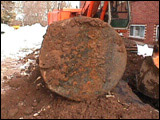 Traditionally, when property was to be purchased, the buyer, through their lawyer, reviewed the legal ownership of the property, the existence of liens, mortgages or other financial restrictions and the legal survey boundaries of the property. The requirement for this “due diligence” review is particularly critical if the property is to be purchased using a mortgage or other financial loan. In this way, the financial institution fully understood any limitations regarding the property and the associated mortgage. Traditionally, when property was to be purchased, the buyer, through their lawyer, reviewed the legal ownership of the property, the existence of liens, mortgages or other financial restrictions and the legal survey boundaries of the property. The requirement for this “due diligence” review is particularly critical if the property is to be purchased using a mortgage or other financial loan. In this way, the financial institution fully understood any limitations regarding the property and the associated mortgage.
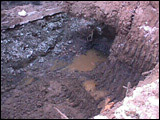 However, during the early 1990’s, many banks found they had foreclosed on property with serious environmental issues, including leaking underground fuel tanks, poor ventilation and indoor air quality or hazardous building materials (e.g., asbestos). Viewed by government regulatory agencies as having “deep pockets”, the banks were forced to address very expensive remedial activities – activities, which often cost many multiples However, during the early 1990’s, many banks found they had foreclosed on property with serious environmental issues, including leaking underground fuel tanks, poor ventilation and indoor air quality or hazardous building materials (e.g., asbestos). Viewed by government regulatory agencies as having “deep pockets”, the banks were forced to address very expensive remedial activities – activities, which often cost many multiples 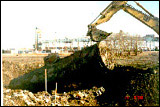 of the original mortgage value. In response, most financial lenders has expanded the “due diligence review” to include an assessment of environmental conditions, liabilities and risks associated with a property. of the original mortgage value. In response, most financial lenders has expanded the “due diligence review” to include an assessment of environmental conditions, liabilities and risks associated with a property.
Known as an Environmental Site Assessment (ESA), the assessment and review is divided into six phases (see CCME. March 1991. National Guidelines for Decommissioning Industrial Sites. CCME-TS/WM-TRE-013E at www.ccme.ca):
 Phase I consists of a review of all historical and existing information on the Subject Property, including the professional opinion of an environmental assessor based on a detailed site review. A Phase 1 usually does not include intrusive sampling. The Canadian Standards Association has issued CAN/CSA Z768-01 (first issued in 1994 and updated in 2001; www.csa.ca) as a standard for Phase I assessments. Phase I consists of a review of all historical and existing information on the Subject Property, including the professional opinion of an environmental assessor based on a detailed site review. A Phase 1 usually does not include intrusive sampling. The Canadian Standards Association has issued CAN/CSA Z768-01 (first issued in 1994 and updated in 2001; www.csa.ca) as a standard for Phase I assessments.
- Phase II provides for intrusive sampling to confirm the determination made from the Phase I findings. The confirmation could either accept or reject identification of potential contamination and therefore environmental liability. The Canadian Standards Association has issued CAN/CSA Z769-00 (issued in 2000) as a standard for Phase II assessments.
- Phase III provides for more detailed intrusive sampling to fully delineate and define the zone(s) of contamination.
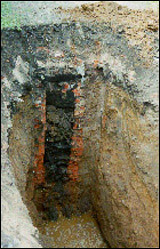 Phase 4 consists of preparation of a Remedial Action Plan (RAP) based on the information derived from Phases I to III, with approval of the RAP by appropriate regulatory agencies. In Nova Scotia, the RAP could include not only an outline of proposed site activities, but also a quantitative risk assessment and management plan (e.g., where petroleum hydrocarbon contamination exceeded Atlantic PIRI Tier 1 values) and a Health, Safety and Environmental Contingency Plan to be used by site personnel and contractors during the remediation. The RAP may also be subject to a requirement for public disclosure and review, such as through “open houses” or “town hall meetings”. Phase 4 consists of preparation of a Remedial Action Plan (RAP) based on the information derived from Phases I to III, with approval of the RAP by appropriate regulatory agencies. In Nova Scotia, the RAP could include not only an outline of proposed site activities, but also a quantitative risk assessment and management plan (e.g., where petroleum hydrocarbon contamination exceeded Atlantic PIRI Tier 1 values) and a Health, Safety and Environmental Contingency Plan to be used by site personnel and contractors during the remediation. The RAP may also be subject to a requirement for public disclosure and review, such as through “open houses” or “town hall meetings”.
- Phase 5 ESA activities consist of site supervision and monitoring during remediation of the contamination. Routine progress and/or monitoring reports may have to be submitted to the appropriate regulatory agency.
- Phase 6 ESA consists of a Closure Survey (essentially a repeat of the Phases 2 and 3 activities) to “prove” that the RAP objectives have been met, a Record of Site Condition and a Certificate of Compliance. The latter is issued by the ESA professional in the name of the Client and accepted by the appropriate regulatory agency. The Subject Property can now be considered as acceptable for development either as fully remediated or developed under a “risk managed” scenario.
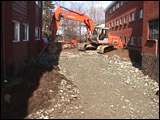 While the ESA reports address commonly accepted aspects of environmental contamination, such as petroleum-contaminated groundwater or pesticide-contaminated soils, aspects such as view planes, indoor air quality, traffic and site vegetation controls have to also be evaluated. Further, the ESA of a property and/or building must address environmental liabilities and risks due to adjacent or neighbouring properties; e.g., leaking underground fuel storage tank at a neighbouring service station. While the ESA reports address commonly accepted aspects of environmental contamination, such as petroleum-contaminated groundwater or pesticide-contaminated soils, aspects such as view planes, indoor air quality, traffic and site vegetation controls have to also be evaluated. Further, the ESA of a property and/or building must address environmental liabilities and risks due to adjacent or neighbouring properties; e.g., leaking underground fuel storage tank at a neighbouring service station.
More recently, many property owners have also had ESA’s conducted to provide a more complete description of the property holdings and to enable them to better address environmental issues, within the process of good management practices.
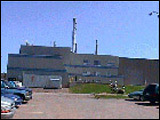 OCL Services Ltd./OCL Group has offered consulting services in all facets of Environmental Site Assessment to private and government clients since 1982. We also provide a “peer review” system for financial companies to ensure ESA’s completed by other consultants meet the mortgage holder’s needs. We conduct several hundred Phase I ESA’s each year. Some of these reports conclude with a requirement for additional site investigations, which we conduct as either Phase II or Phase III ESA’s. Using this information, we then work with a Client and regulatory agencies to develop a Remedial Action Plan, implement the Plan (with appropriate monitoring) and provide appropriate documentation at the conclusion of the remediation (e.g., Closure Report, Record of Site Condition, Certificate of Compliance, etc.). Our staff include Professional Geoscientists, Certified Environmental Site Assessors and Certified Domestic Fuel Oil Spill Site Professionals. OCL Services Ltd. is registered with many of the Canadian and Atlantic regional financial institutions. OCL Services Ltd./OCL Group has offered consulting services in all facets of Environmental Site Assessment to private and government clients since 1982. We also provide a “peer review” system for financial companies to ensure ESA’s completed by other consultants meet the mortgage holder’s needs. We conduct several hundred Phase I ESA’s each year. Some of these reports conclude with a requirement for additional site investigations, which we conduct as either Phase II or Phase III ESA’s. Using this information, we then work with a Client and regulatory agencies to develop a Remedial Action Plan, implement the Plan (with appropriate monitoring) and provide appropriate documentation at the conclusion of the remediation (e.g., Closure Report, Record of Site Condition, Certificate of Compliance, etc.). Our staff include Professional Geoscientists, Certified Environmental Site Assessors and Certified Domestic Fuel Oil Spill Site Professionals. OCL Services Ltd. is registered with many of the Canadian and Atlantic regional financial institutions.
|












